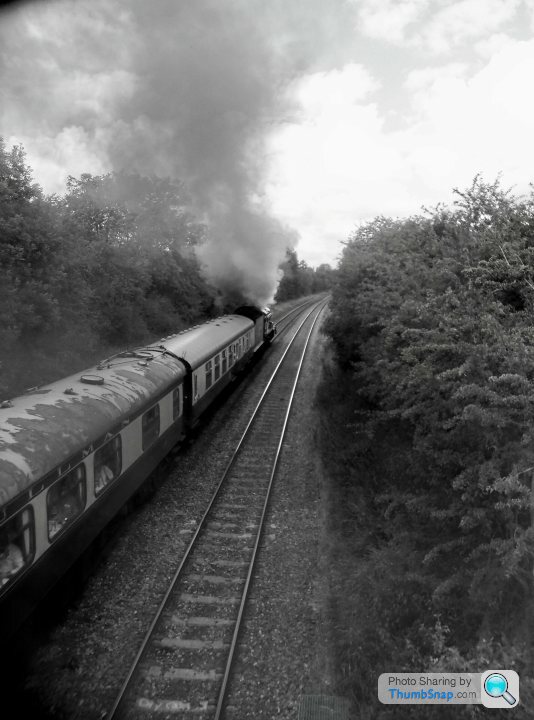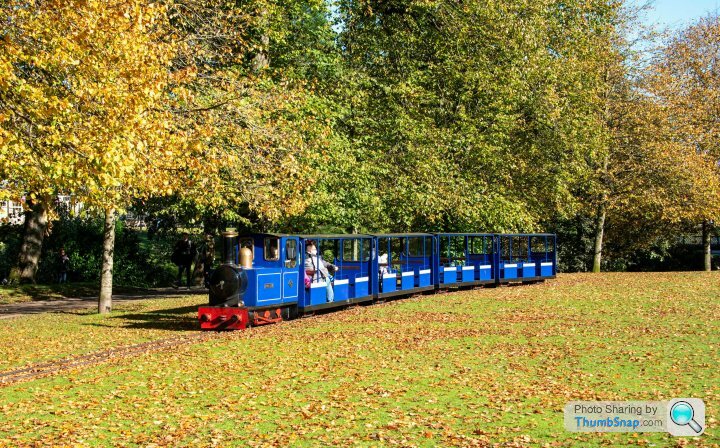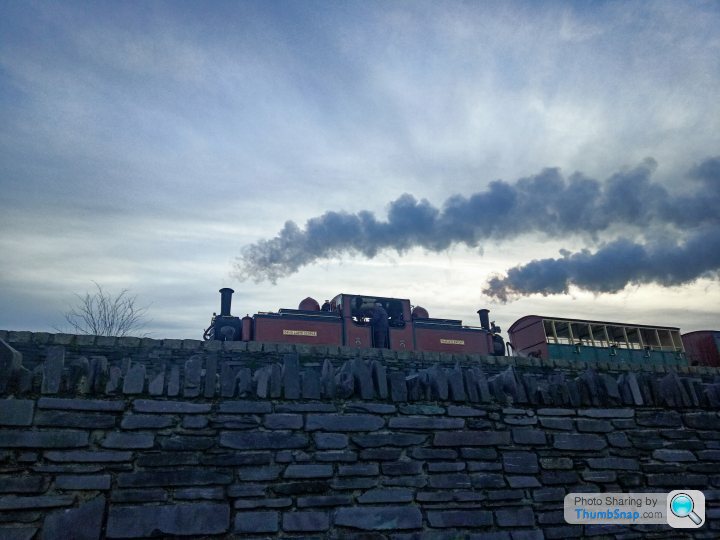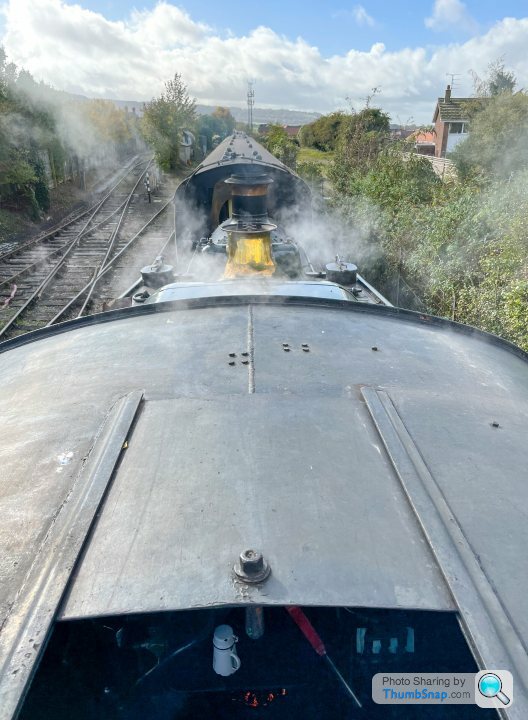Incredibly cool photos of trains
Discussion
Yertis said:
Weren’t the ‘USA’ laid out so they could be driven from either side anyway? I may have mis-remembered that. Also some inherently dangerous design flaw to do with steam pipes, gauges or something. Ugly things anyway. Even that GWR pannier up thread is better looking.
Just delved into my books - the USAs were RHD (as was the norm for American locos). One was trialled at Lancing carriage works to replace the Terriers as a works engine, but because the site was built on a continual left-hand curve the visibility was deemed poor (Terriers were all LHD). So two USAs were converted to LHD, which was apparently very easy because they were a standard USATC design so were built like giant Meccano sets.
P5BNij said:
I've just remembered the English Electric Type 1 / Class 20s had dual controls too, on opposite corners of the cab because of the 'long bonnet' design...
Bonnet side controls with narrow front window...

Other side with larger window...
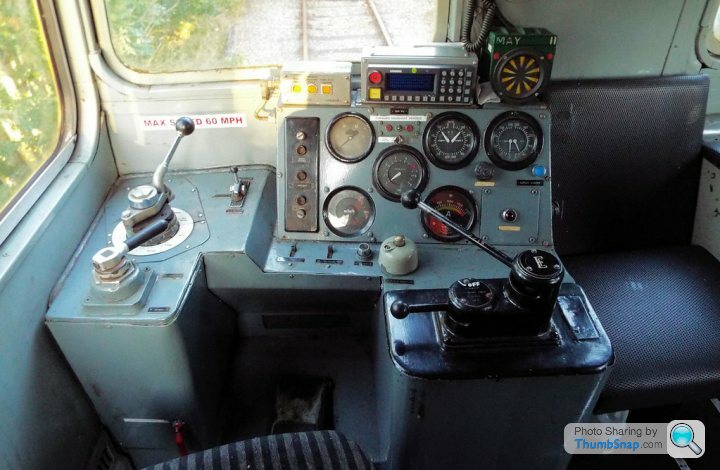
IIRC, on a Class 20 the controls facing 'long nose-ward' are the 'real' ones (i.e the reverse is actually wired into the electrical gear, power handle is actually plumbed into the engine's hydro-pneumatic governor, the brake handle is acting directly on the brake system) while the ones at the flat end are just linked by rods to the other desk. Bonnet side controls with narrow front window...

Other side with larger window...

Which seems like an interesting remnant of the thinking in the early days of diesel traction when it was just assumed that the driver would be at the back, peering through a narrow window down the side of a long nose.
Several American railroads specced their early road switchers to run 'long hood forwards' and there was one (Norfolk & Western, I think) that continued to do right up until it was merged out of existence in the 1980s. There were others (Western Pacific was one, I'm sure) which even if the units were always operated short hood first and had the control stand set up to be driven that way, the long nose was still officially the front, so technically the unit was always being driven backwards.
2xChevrons said:
<clip> an interesting remnant of the thinking in the early days of diesel traction when it was just assumed that the driver would be at the back, peering through a narrow window down the side of a long nose...
Which in itself is interesting because as early as 1906 the Metropolitan Railway commissioned their Westinghouse 'Camel Back' locomotives which gave the driver a very clear view in all directions. Then in 1921 Metropolitan Vickers built the better known Metropolitan electric locomotives that were in use up to the '60s. My father worked for London Underground at Acton Works and as a boy I remember seeing No12 Sarah Siddons in use there as the works shunter.

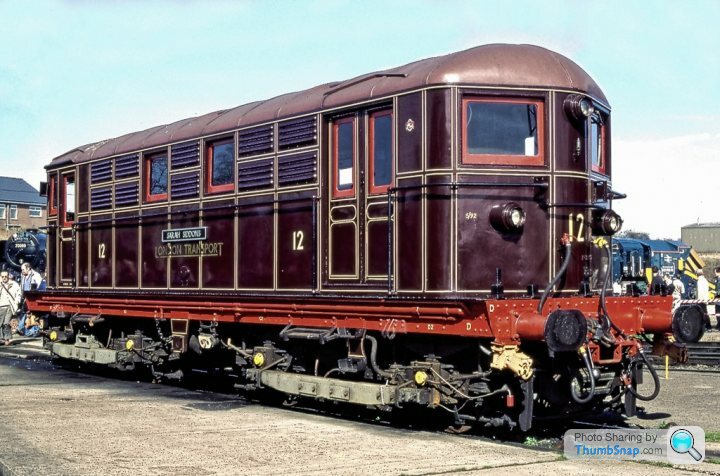
2xChevrons said:
Just delved into my books - the USAs were RHD (as was the norm for American locos).
One was trialled at Lancing carriage works to replace the Terriers as a works engine, but because the site was built on a continual left-hand curve the visibility was deemed poor (Terriers were all LHD). So two USAs were converted to LHD, which was apparently very easy because they were a standard USATC design so were built like giant Meccano sets.
It would have been quicker and cheaper just to have the USAs turned to face the opposite direction.One was trialled at Lancing carriage works to replace the Terriers as a works engine, but because the site was built on a continual left-hand curve the visibility was deemed poor (Terriers were all LHD). So two USAs were converted to LHD, which was apparently very easy because they were a standard USATC design so were built like giant Meccano sets.
Maxym said:
It would have been quicker and cheaper just to have the USAs turned to face the opposite direction.
That was decided against because it would still leave the driver having to turn towards the back of the cab (while the controls are at the front) for the delicate coupling/uncoupling/positioning moves at the works themselves, while running bunker-first out away from the works towards the headshunts was when visibility and control was less critical. During the trials the USAs were initially tried facing 'chimney in', then after just one shift the loco was taken away to be turned because of the visibility issue on the curve. Working 'bunker in' was better but not ideal, so before the USAs fully replaced the Terriers some were converted to LHD.
WelshChris said:
Another new one off the Boston Lodge production line - say hello to James Spooner, officially named last Friday.
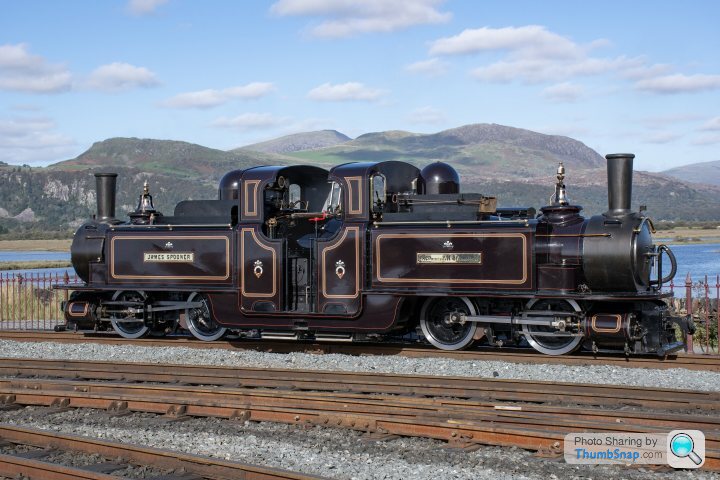
Am I right to guess that we now build more steam locomotives in this backwards-evolving country than we do diesel or electric locomotives? (I include multiple-units in that)
Please tell me I'm wrong.
Gassing Station | Boats, Planes & Trains | Top of Page | What's New | My Stuff





